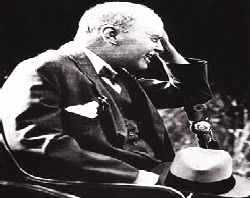The genius of Ross
The genius of Ross

> The discovery of the parasite that causes malaria is credited to Charles Louis Alphonse Laveran, a French army physician working in Algeria. Laveran's work, published in 1880, was received with scepticism by leading malariologists at the time. Little was known about the disease and it was believed that it was caused by marsh gas ( mal - bad, aria - air). It took the dedicated work of Ronald Ross, a British officer of the Indian Medical Service, to establish that malaria is caused by a parasite and that it is transmitted to humans by mosquitoes.
Ross was a many-sided genius. But his work on malaria is perhaps the most coherent body of work that guided almost a century of research. Ross worked without support from his employers, and persevered through many difficulties and disappointments to finally show that the malaria parasite develops in the stomach wall of the mosquito.
Ross was successful on three counts. First, he showed that the malaria parasite develops in dapple-winged brown mosquitoes ( Anopheles ). Second, he established that the parasite ( Plasmodium ) migrates to the salivary glands of the female mosquito from where it is transmitted to animals through saliva, which is injected into the host when it bites. Ross could not use human subjects, but his work on bird malaria was easily extended to humans by Italian researchers, and became the mainstay of research on parasites until a couple of decades ago.
Third, Ross's contribution to the epidemiology of malaria was far ahead of his times. Ross utilised his knowledge of applied mathematics in his study of parasitology to show that a nearby puddle may be as dangerous as a distant marsh - a 'law' that holds true a hundred years later. While this was easily accepted by the scientific community, his suggestion that control of mosquitoes would control malaria was not. The main grounds for rejection were that areas cleared of breeding mosquitoes would be rapidly reinvaded by mosquitoes from beyond. Second, it was maintained that to get rid of every anopheline from an area was a hopeless task.
Ross again resorted to mathematics - the inverse square law - to demonstrate 'the drunkard's walk', explaining that the distance and degree of reinvasion would not dilute attempts to control breeding of mosquitoes. To the second objection, he constructed a model of transmission showing that it was unnecessary to get rid of the last mosquito. Rather, if mosquito density were reduced below a threshold level, the rate of new infections would fall below the rate at which infected people recovered. As a result, malaria would die out. This 'threshold theory' has stood the test of time well, and underlies the whole theory of vector control. It is only in the last few years that discoveries of various species of Plasmodium have required its revision.







